With the Marc Chagall exhibition, the spirit of Ferrara, secularly tending to metamorphoses, to the placid or adventurous sur-natural, enters its specific world, delightful and imbued with culture, which cannot fail to gracefully recall our modernity. Ferrara welcomes, and it is Chagall who paves the way, the intimate path of feelings, that of palpitations, whispers, poetic or biblical epics, and does so with the endless dance of colors that make our eyes radiant. The pictorial dance where the skies turn upside down to envelop us, to enter us, and where nature responds with the infinite kaleidoscope of its flowers, verzures, lights and shadows, but also with bodies freed from weights and transfigured in symbols. It really seems to be in the ancient gardens of Addizione, in those where the radiant and phantasmal Palazzo dei Diamanti that hosts the Exhibition still rests.
And it is Chagall’s hand that operates this tireless evasion from matter by offering and playing on the necessity of symbols, which transfer their primal incongruity into the liberations that all things demand and that we find in his paintings: the nonexistence of planes of depth, or of the heavy earthly attraction, and also of that binding order that always accompanies us in life on bodies and things. It is thus the unbridled love for the Theater of this artist of many genes and varied existential experiences that overturns and sings the epos of coveted but lived or livable realities that always make the human figure, and its dreams, the protagonist.
Forcing Chagall’s slight painting a little, we could say that everything in his works vaporizes in induction, but also that everything is tactilely close, dear, lovable, adjacent to the senses, and immediately rich in epic adventures pregnant with sighs: that is, a triumph of lights and dreams to which the painter-poet surrenders as to the enveloping waves of flights and desires. There is no need to ask of this broad and subtle creator-or rather transmitter of feats and gasps-some reasoned, established conclusions, for these are already within us, and he awakens them in the peace of contemplation and sharing finally possessed, enjoyed. For the one who would ask, in fact, there is a poetry that we all secretly already carry within, and with him we can make it vibrate: it is the poetry of “I would,” sweet, inexhaustible.
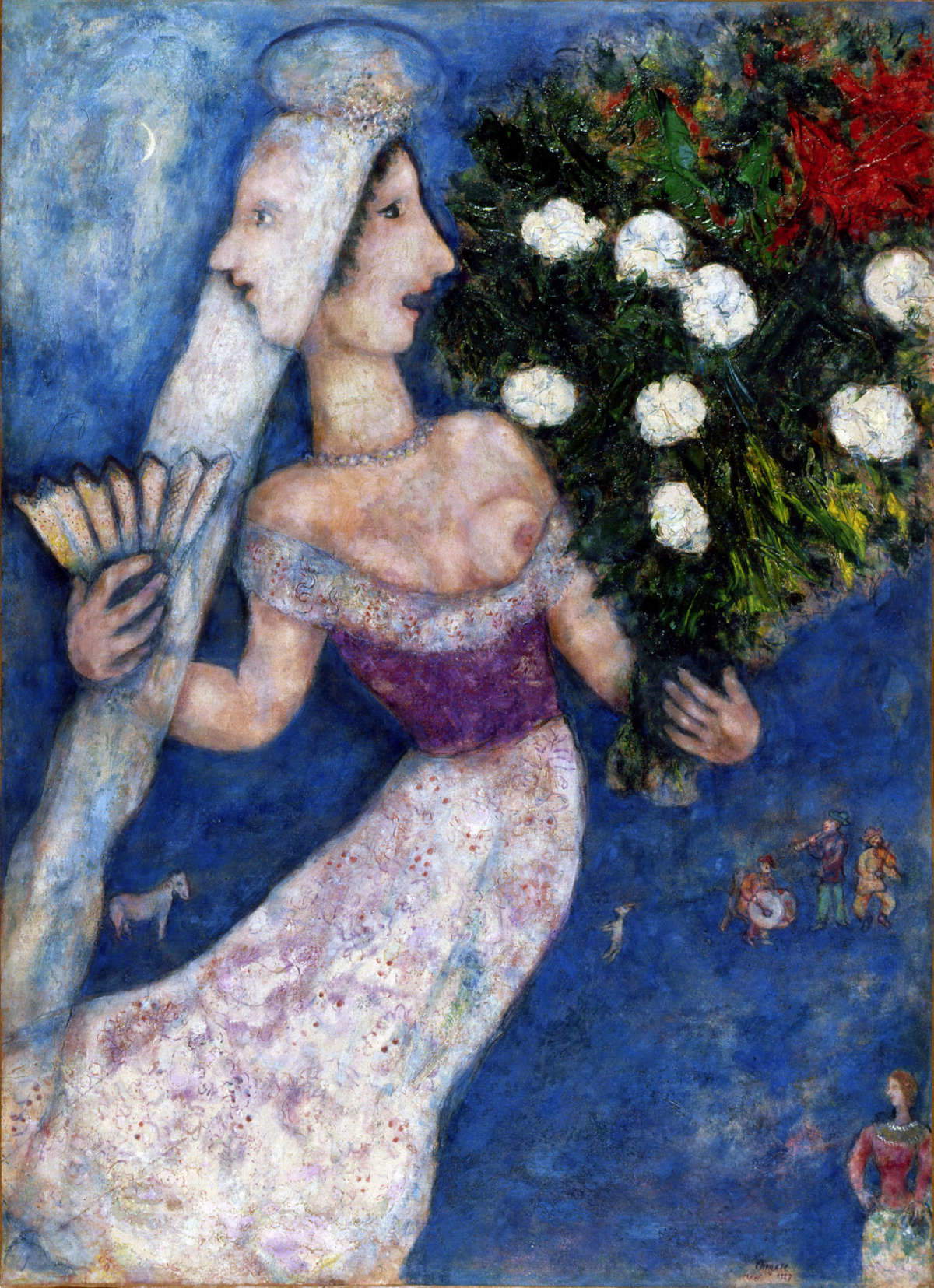
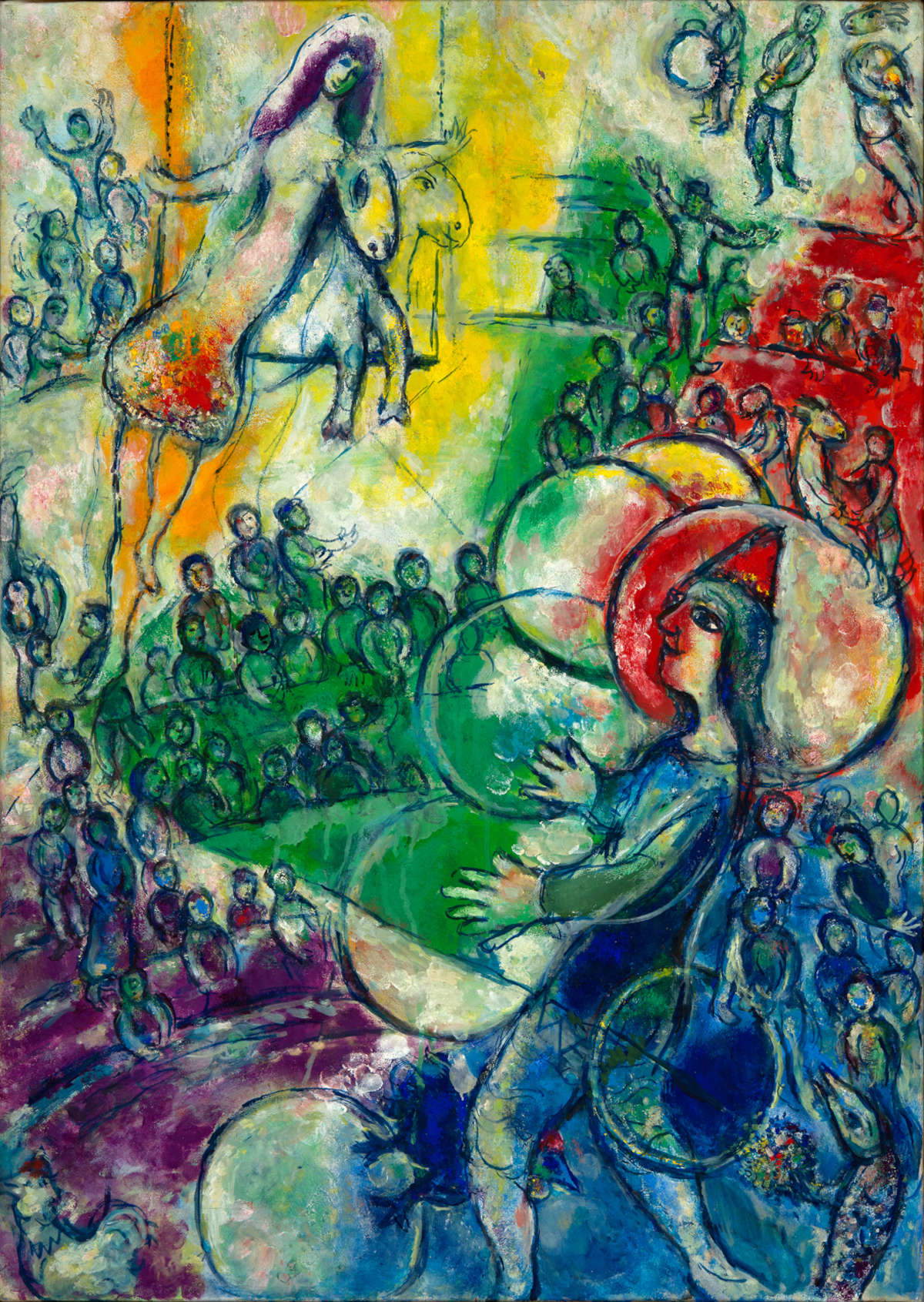
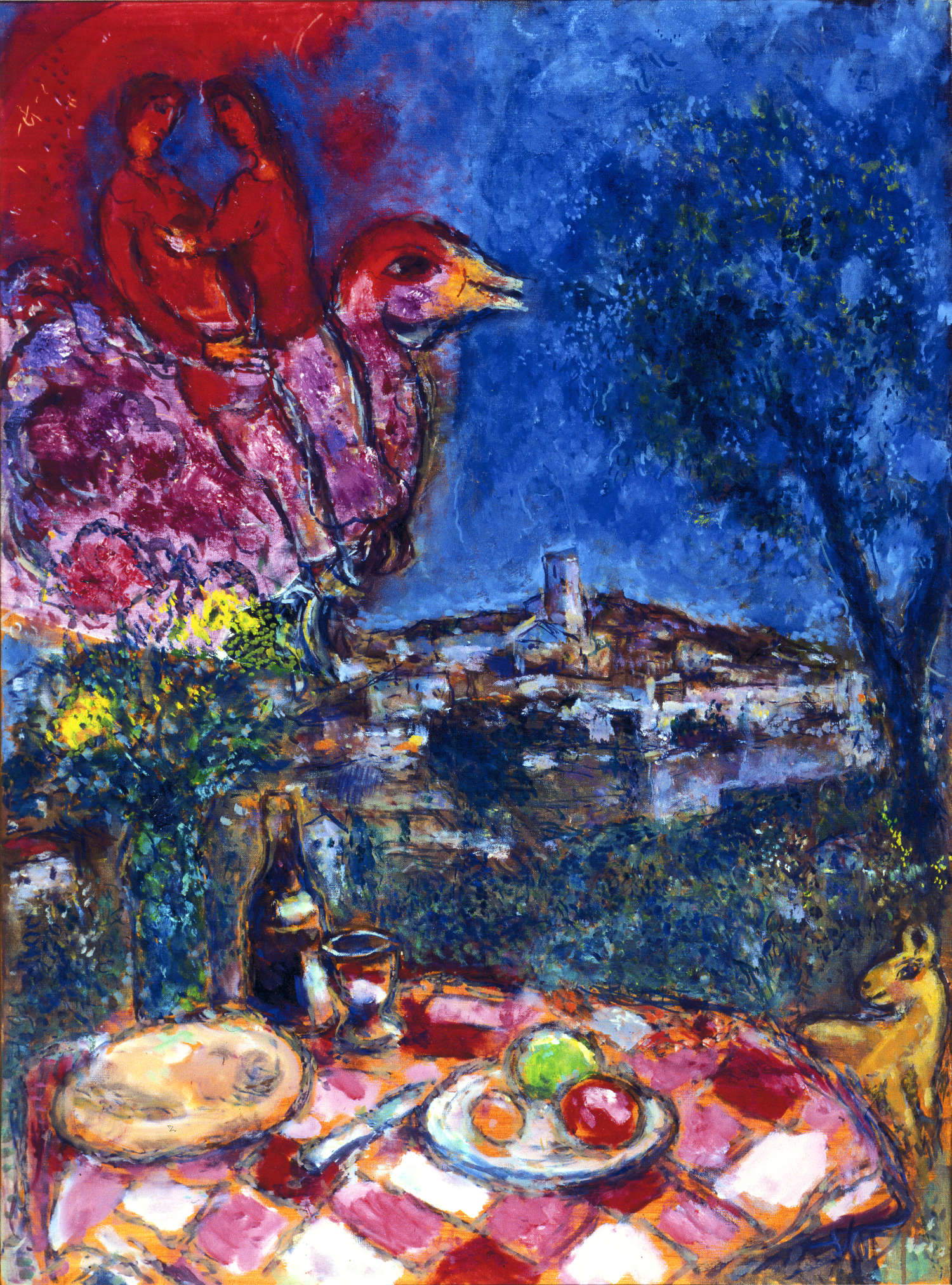
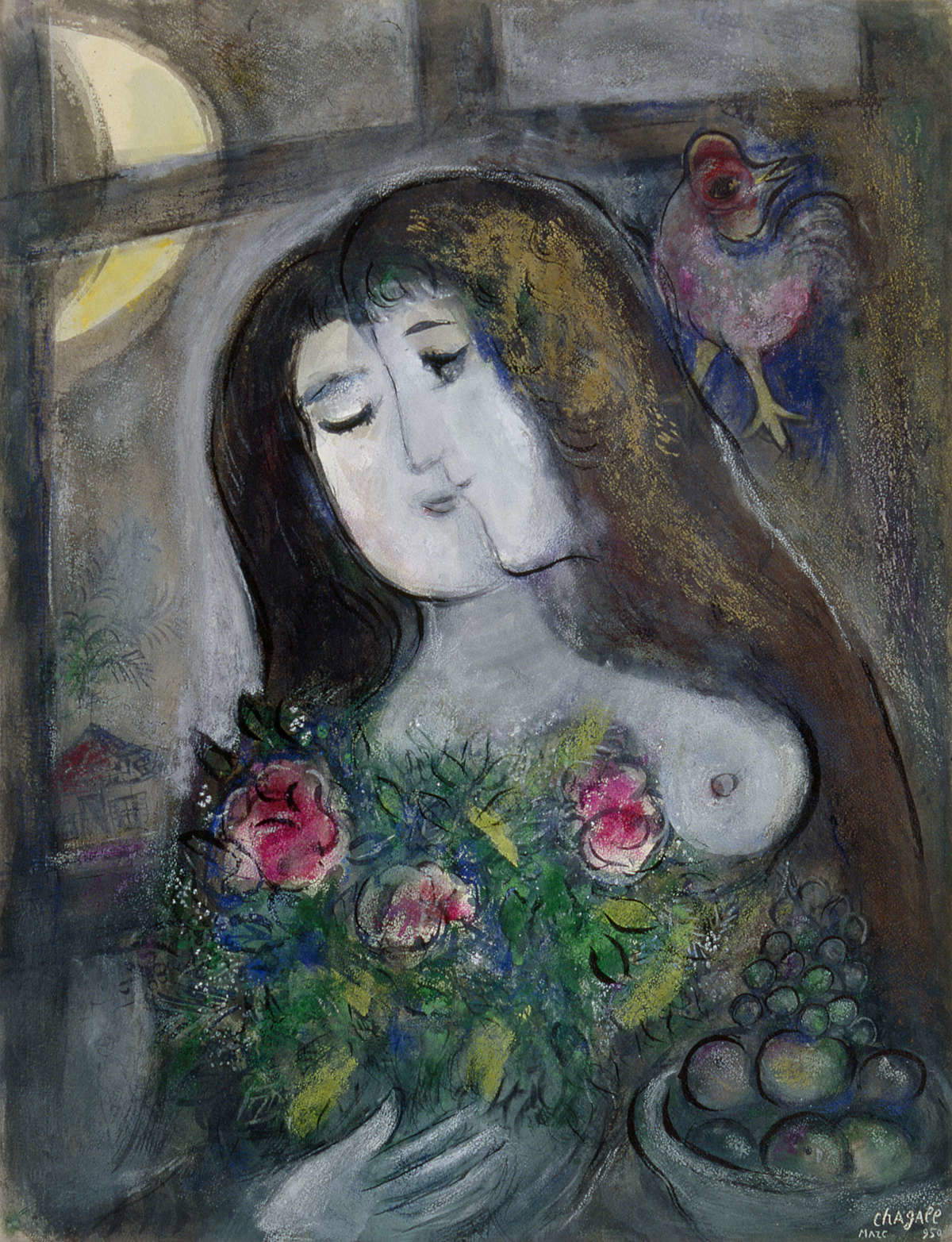
The precious catalog of this not-to-be-missed exhibition, that is, of this supersensible encounter with an artist who remains above time, offers us a fulfilling mirror of his oeuvre, really dense with works, according to his character that never ceased to propel him to visions, to happy stimuli. The catalog, like the encyclopedias or editions about him, also offers us an excursus of his life, which we summarize here for the rightly curious reader. The one whom we know as Marc Chagall, according to the French spelling of his name, was born as Moishe Segal in Vitebsk in July 1887 to a Jewish family who, like the five million of this people, lived in that wide ancient Belarus where the czar regime had concentrated them. Subsistence was very modest and his family, with eight children, also practiced certain handicrafts and small trades.
Russian schools were forbidden to Jews and their religion forbade “figure-making.”
Moishe, whose instinct for drawing was very strong, therefore had to go through hard vicissitudes of learning, reaching the miserable years in St. Petersburg (1906-1910) where he had to rent not half of a small room but half of a bed, until some of his wealthy co-religionists, appreciating his works, supported him at a qualified academy. On periodic trips to Vitebsk he met Bella, who immediately became the woman of his dreams and would be his bride.
In 1910 he was able to arrive in Paris after a four-day journey, and here the culture of
Chagall expands resoundingly, and acquaintances and meetings with all the artists then present take place. And it was in front of one of his paintings that Guillaume Apollinaire first uttered the word “surnaturel” and dedicated to him that long Surrealist poem entitled Rodsoge au peìntre Chagall. Our Lord, however, will never be part of a movement or an expressive choice. Instead, working periods follow one another: Paris 1910-1914; return to Russia 1914-1922 where the outbreak of World War I had stopped him, but here he did not then accept the criteria of the revolution; 1922-1923 new escape to Berlin which was followed by the second long stay 1923-1941 in Paris; his fame increases everywhere and in 1941 he accepts an invitation to the United States (1941-1948) thus escaping the new war; in 1948 he returns to France and settles in Vence, close to Picasso and Matisse, and here he will develop monumental undertakings; he will die on March 28, 1985 in Saint-Paul-de-Vence. To the city of Nice he will have already donated the Biblical Message Museum (1969) with his own works.
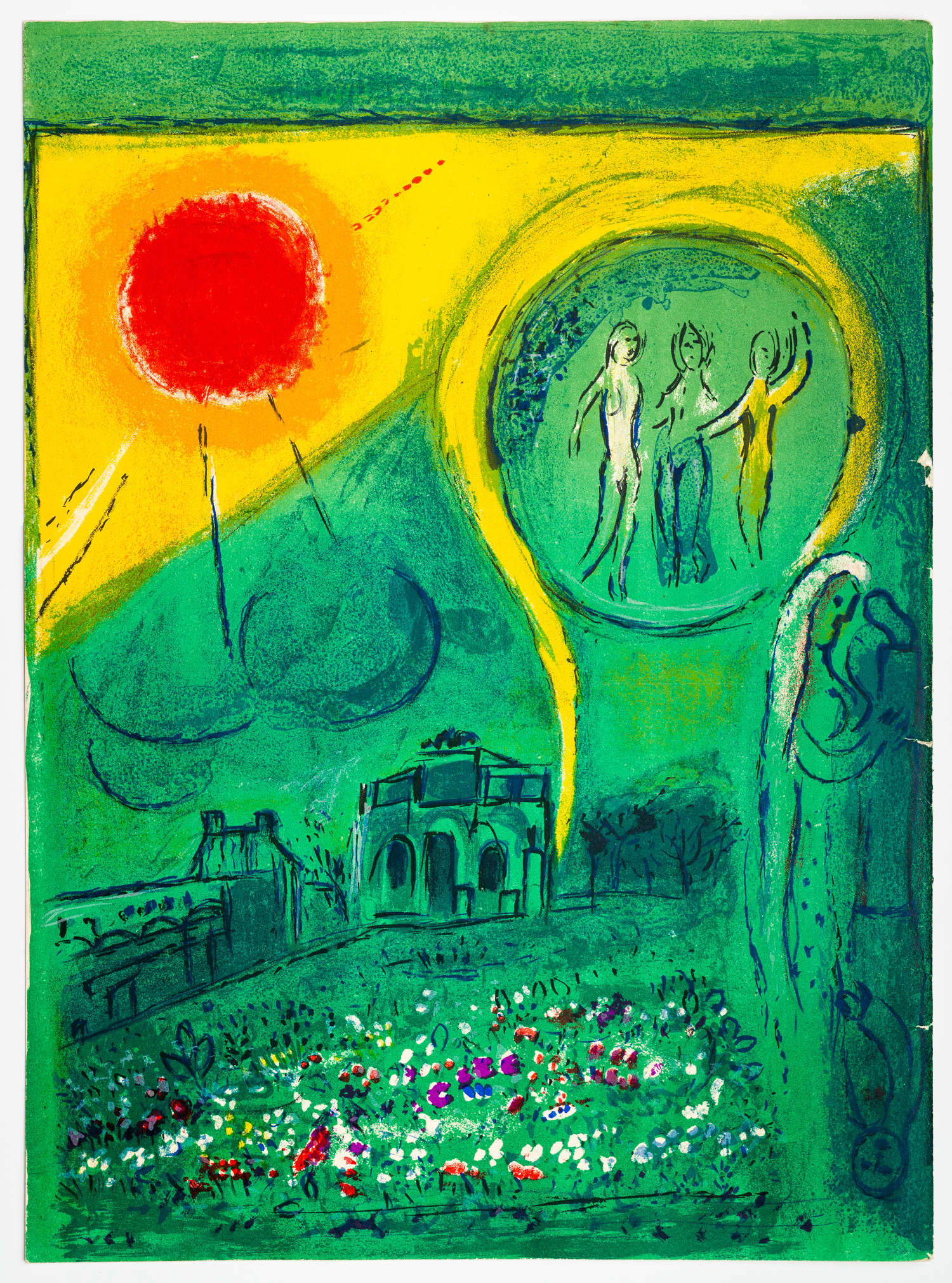
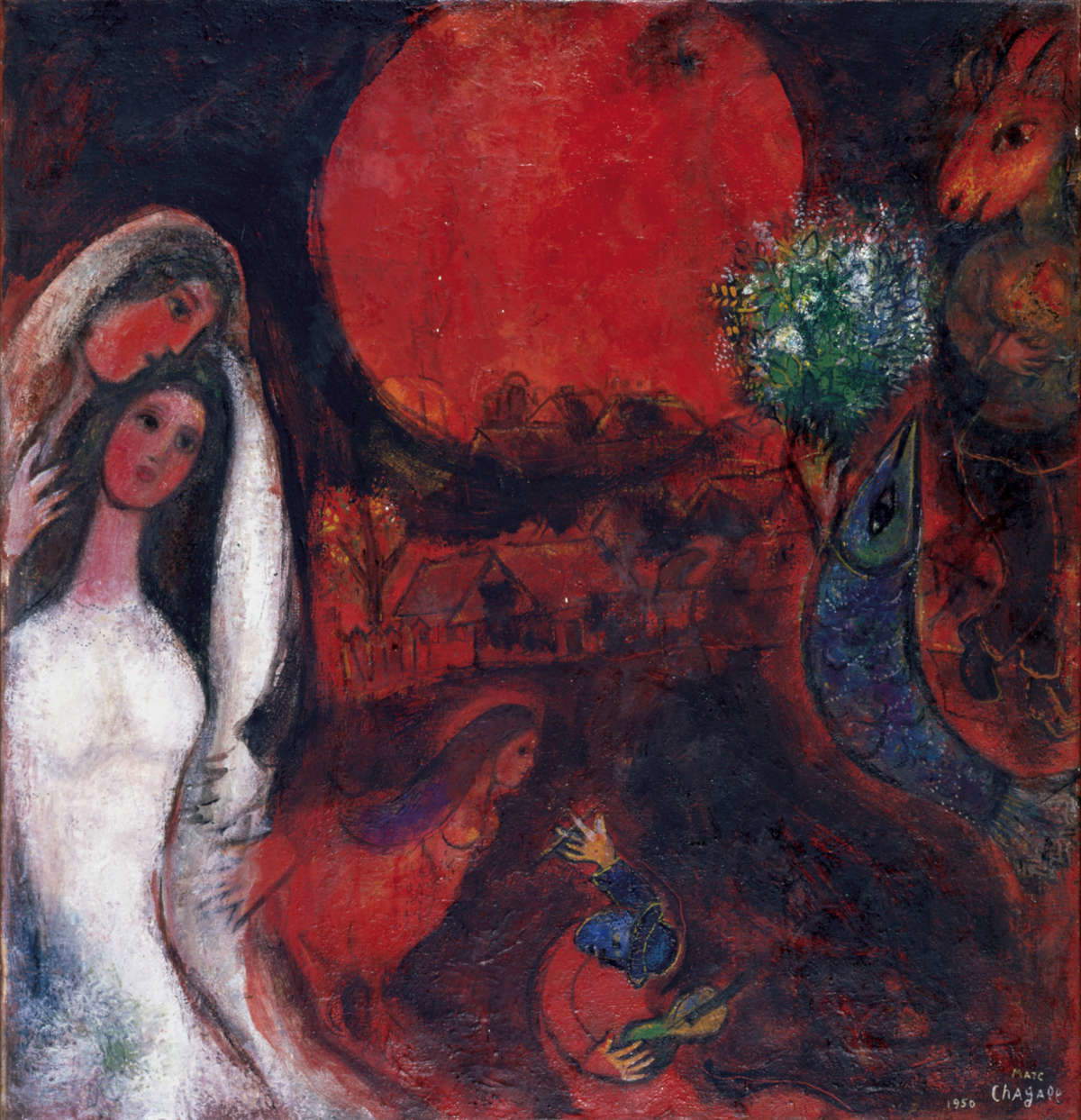
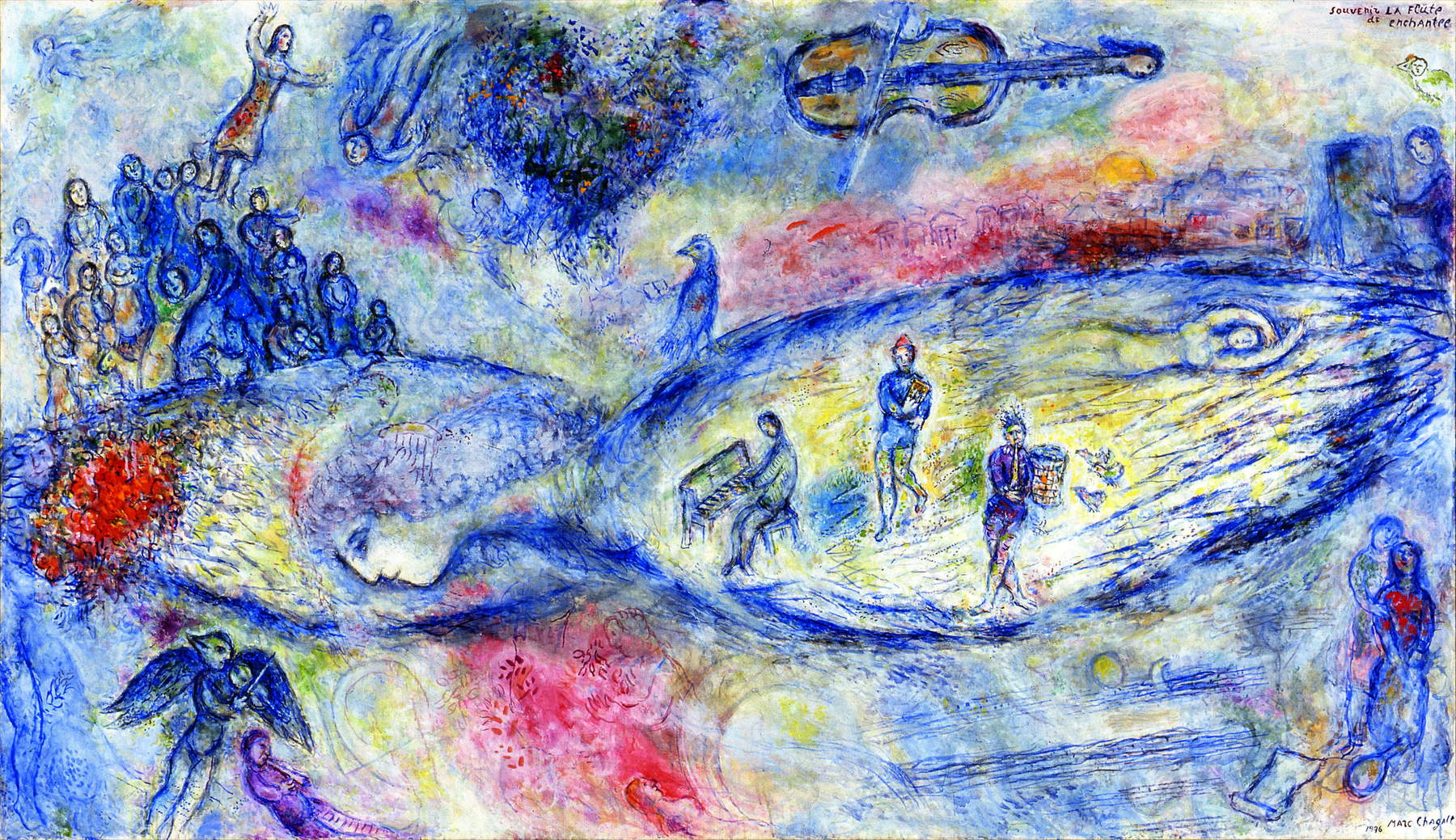
The Ferrara exhibition brings together the impressive overview of his production, where Chagall’s character always emerges, from the lyrical and musical paintings to the grand theatrical sagas, but where it nevertheless remains elusive in every moment to a single character and calls higher to our following, our wanting to fly with him. It is a character, if we wanted to call it that, that remains dreamlike, exhilarating, deconcentrated but icastic as much as anything, and rhythmic in assonances, in distant references that stand outside the constraints of space, time, reasoned but distantly present reason. His art is of a true modernity, and it may well be said that the City of Ferrara has been able to choose this adventure of encounter, this polite and verisimilar counter-song with respect to its own history, its own poetic capacity.
The event is organized by Fondazione Ferrara Arte and Arthemisia, and the whole artistic part is curated by Paul Schneiter and Francesca Villanti: a merit that marks an important area in the current Italian cultural map, already marked by Studio Esseci and in particular by Simone Raddi. It is very useful and highly attractive to follow the sections of the exhibition, with which learning becomes happy and constructive for every visitor. Here is the sequence of the Sections: Chagall Witness of His Time - Eternal Memory - The Meeting of Traditions: when East and West speak to each other - La Fontaine’s Fables: the consecration of a Master - Exodus or the Ship Exdodus: when biblical history meets contemporary chronicle - Paris after Exile - When Music Becomes Color - Faces and Masks: ontology of duality in Chagall - In Dialogue with Matter - Mediterranean: rebirth in light - Divine Transparencies - The Garden that does not exist.
This list will be enough to understand the exhibition’s embrace for all, especially since the itinerary is supported by basic fact sheets to introduce us to the theme of each section. And on the way we will feel in our innermost selves that magical echo of music-poetry that always accompanies the pictorial approach to the lucid dreamer. The décor is magical and enthralling, marvelous in inventions of adequacy, in lights, arrangements, projections, double images and invitations; prehensile in the soul of every visitor and stupendously aimed-we mean it-to children and those who children feel to return. A high and true service that comes to us from an excellent Municipal Administration and a most pleasant Reception Service, unparalleled. And it is here that Ferrara becomes the unfailing city to every elected soul.
Warning: the translation into English of the original Italian article was created using automatic tools. We undertake to review all articles, but we do not guarantee the total absence of inaccuracies in the translation due to the program. You can find the original by clicking on the ITA button. If you find any mistake,please contact us.